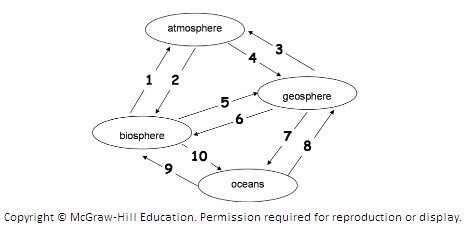How has California's location at the boundary of two large tectonic plates influenced its seismic history?
What will be an ideal response?
California is at the boundaries of the North American and the Pacific Plates. The movement of these plates created a series of lateral faults. There is enough vertical movement along these faults to create a series of mountain ranges that extend from northern California south to Mexico. These mountains are referred to as the Coast Ranges. These faults have also been responsible for the thousands of earthquakes that have caused damage to parts of California.
You might also like to view...
Surface waves are used to analyze the Earth's interior structure
Indicate whether the statement is true or false
How long does it take most deep water to rise to the surface?
A) 100 to 200 years B) 200 to 300 years C) 500 to 600 years D) 1,500 to 1,600 years
The following diagram illustrates the Carbon Cycle. Each arrow represents the transfer of carbon from one component of the Earth system to another. For example, arrow 1 represents the transfer of carbon from the biosphere to the atmosphere. Match the answers below to the number on the diagram. Match the lettered answer to number 9 on the diagram.
Match the lettered answer to number 9 on the diagram.
A. Weathering B. Fossil fuel formation C. Photosynthesis D. Shell formation E. Respiration
What is a culture hearth—and how and why did the colonial-era New England culture hearth differ from the Pennsylvania culture hearth?
What will be an ideal response?